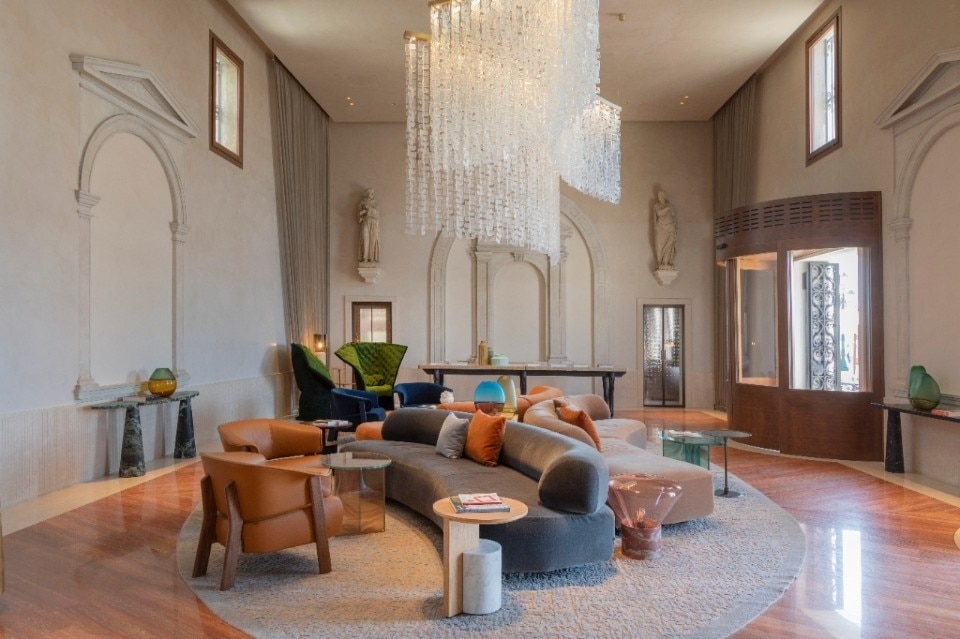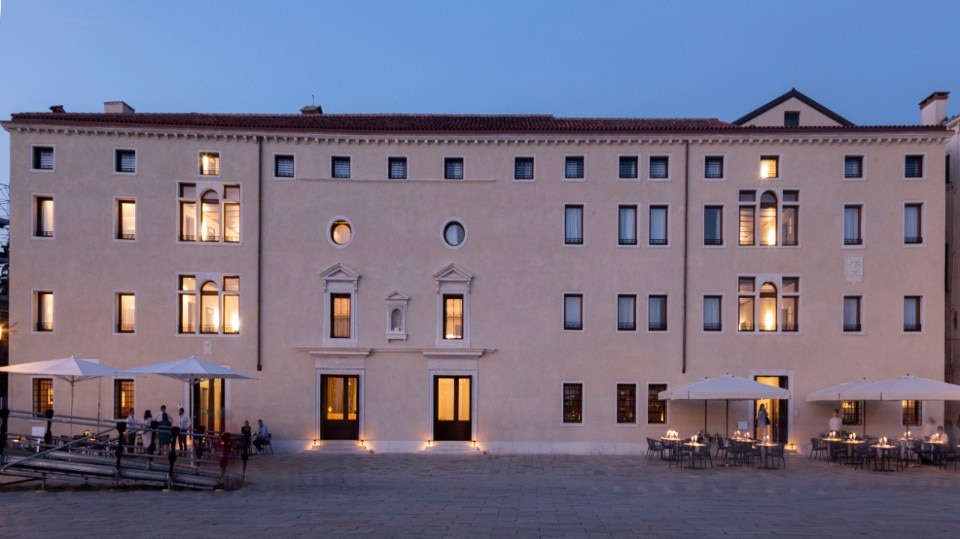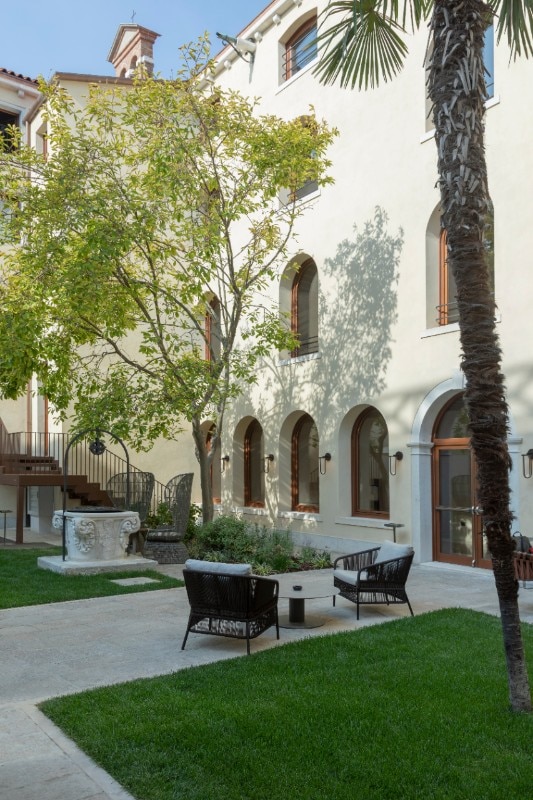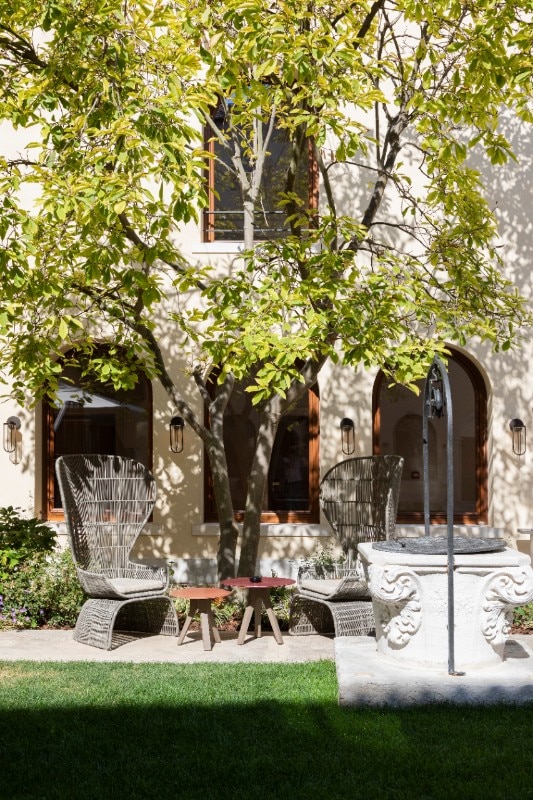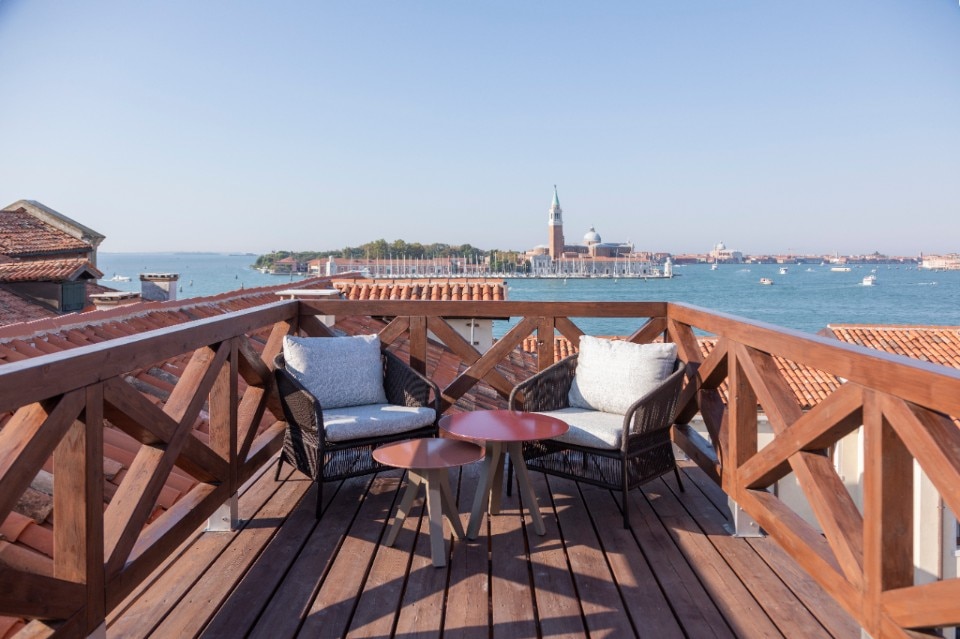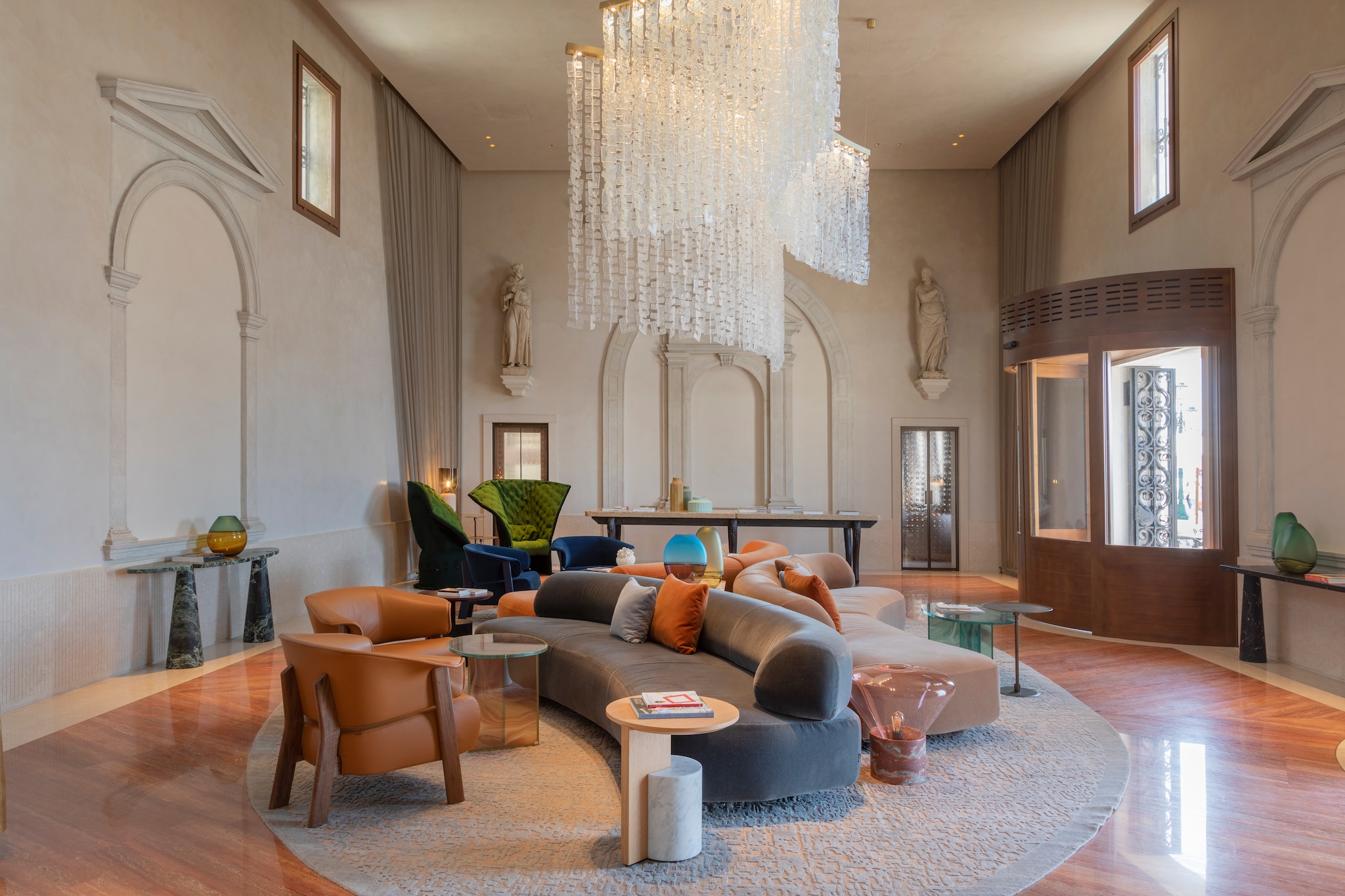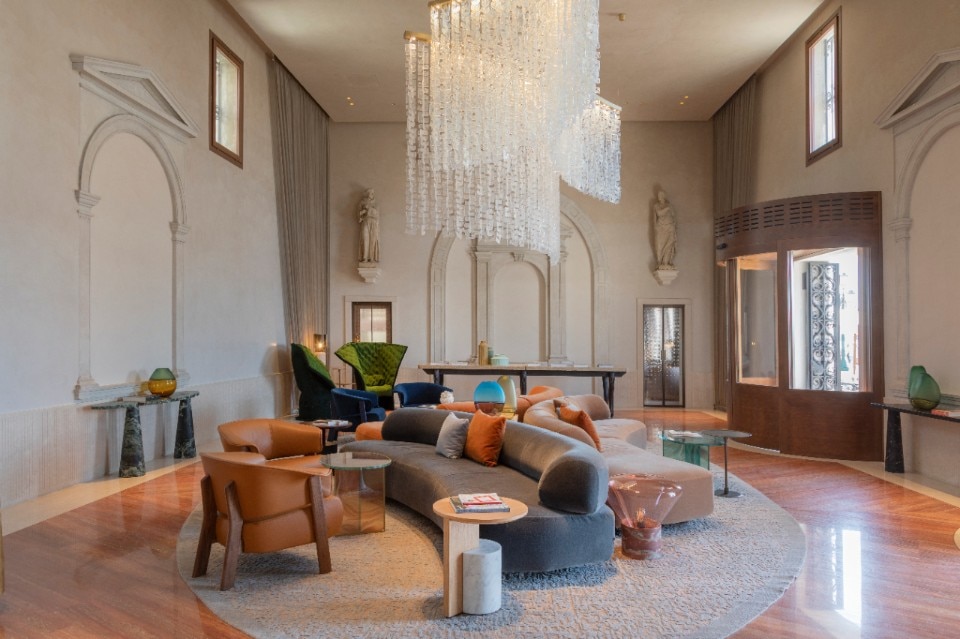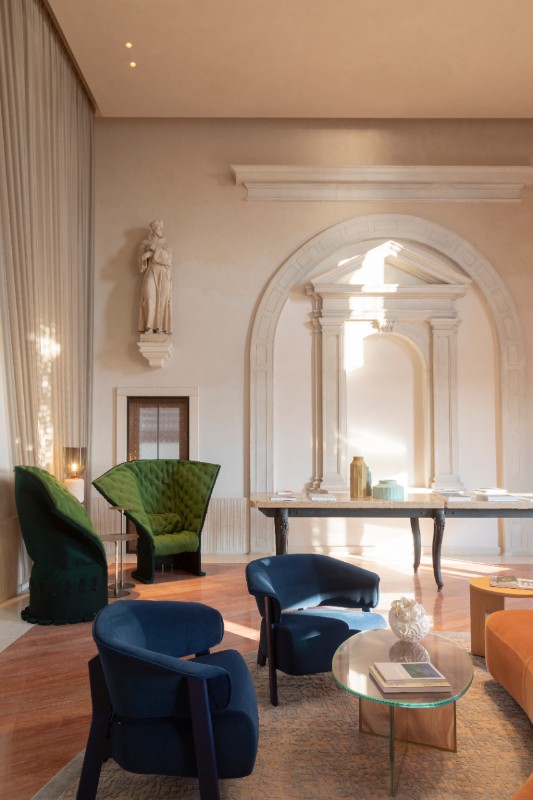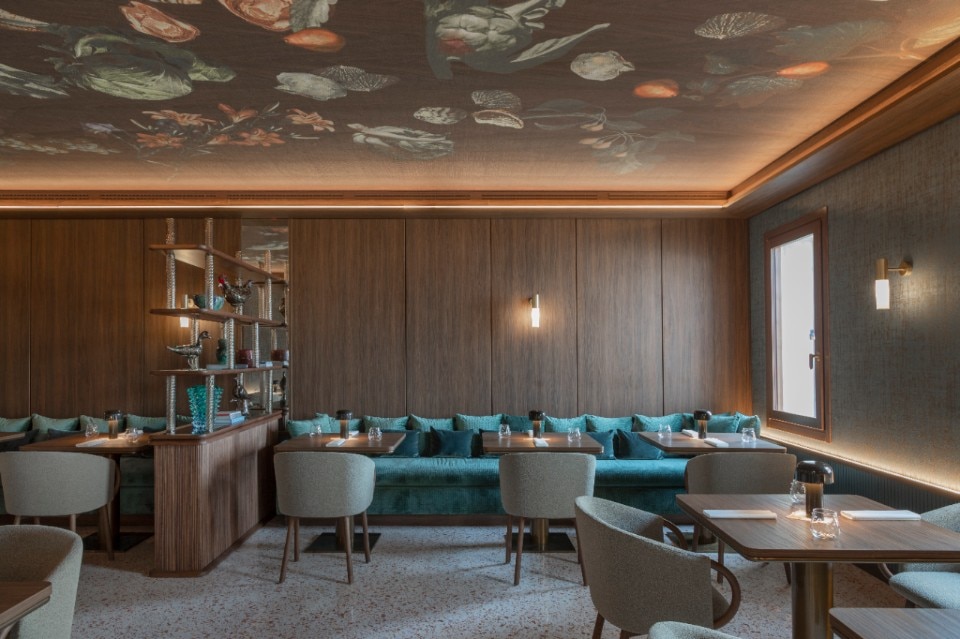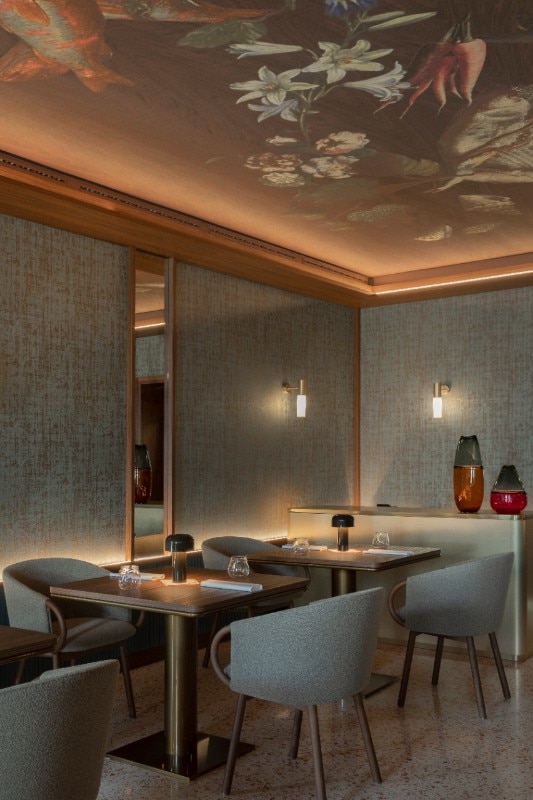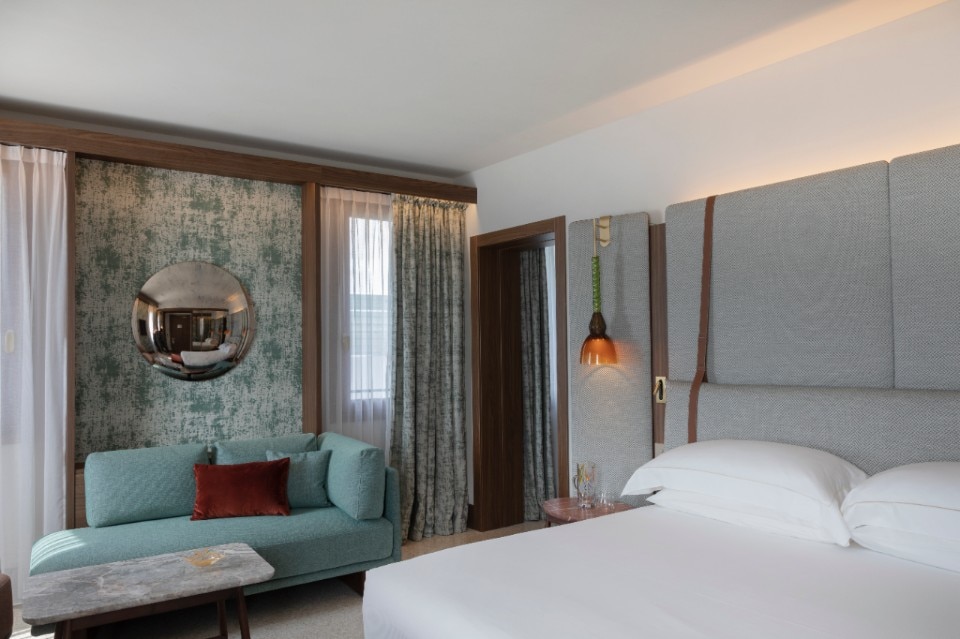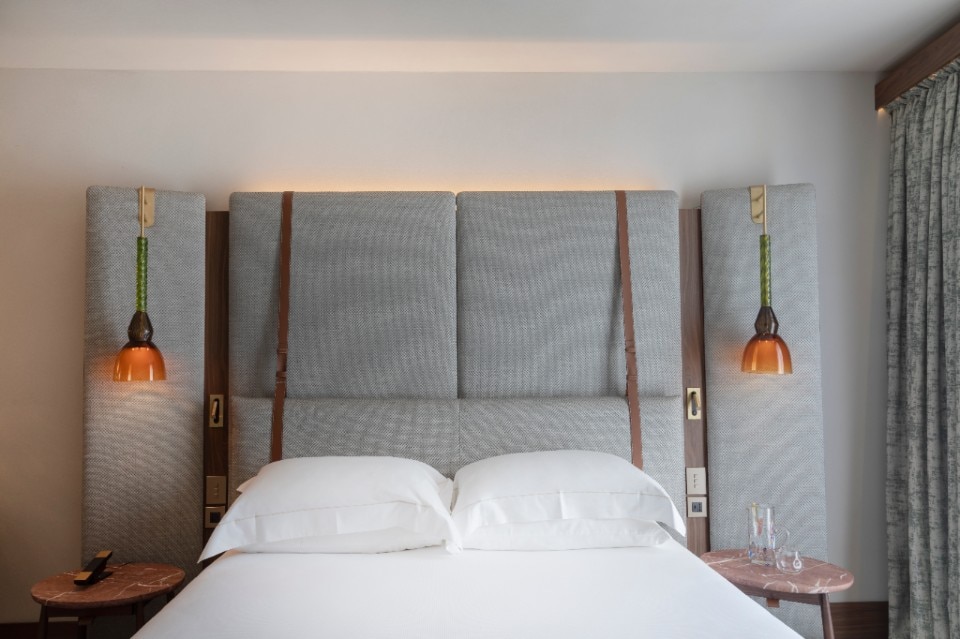There is no real sign outside the new Ca’ di Dio hotel in Venice. Only the large, severe façade, freshly repainted in a discreet grey, facing the lagoon and the island of San Giorgio on the Riva degli Schiavoni. The two main doors lead directly into the lobby, where the check-in process is carried out on pastel-coloured sofas, under a chandelier made up of 14,000 Murano glass crystals, hanging majestically with its three large sails from the double-height ceiling. The staff, in beige uniforms and masks, move attentively among the modern and precious furnishings, picking up an ultralight laptop when necessary. Carefully arranged on the tables, like in a luxury bookstore, are photography books which all share the same subject: Venice.
Formerly an accommodation for pilgrims making their way to the Holy Land, and a hospice for women in need, Ca’ di Dio was rebuilt in the mid-sixteenth century based on drawings by Sansovino, which have since been lost. Its origins date back to 1272. Several clues reveal the original function of the hotel lobby, which once housed the Oratory of Santa Maria.
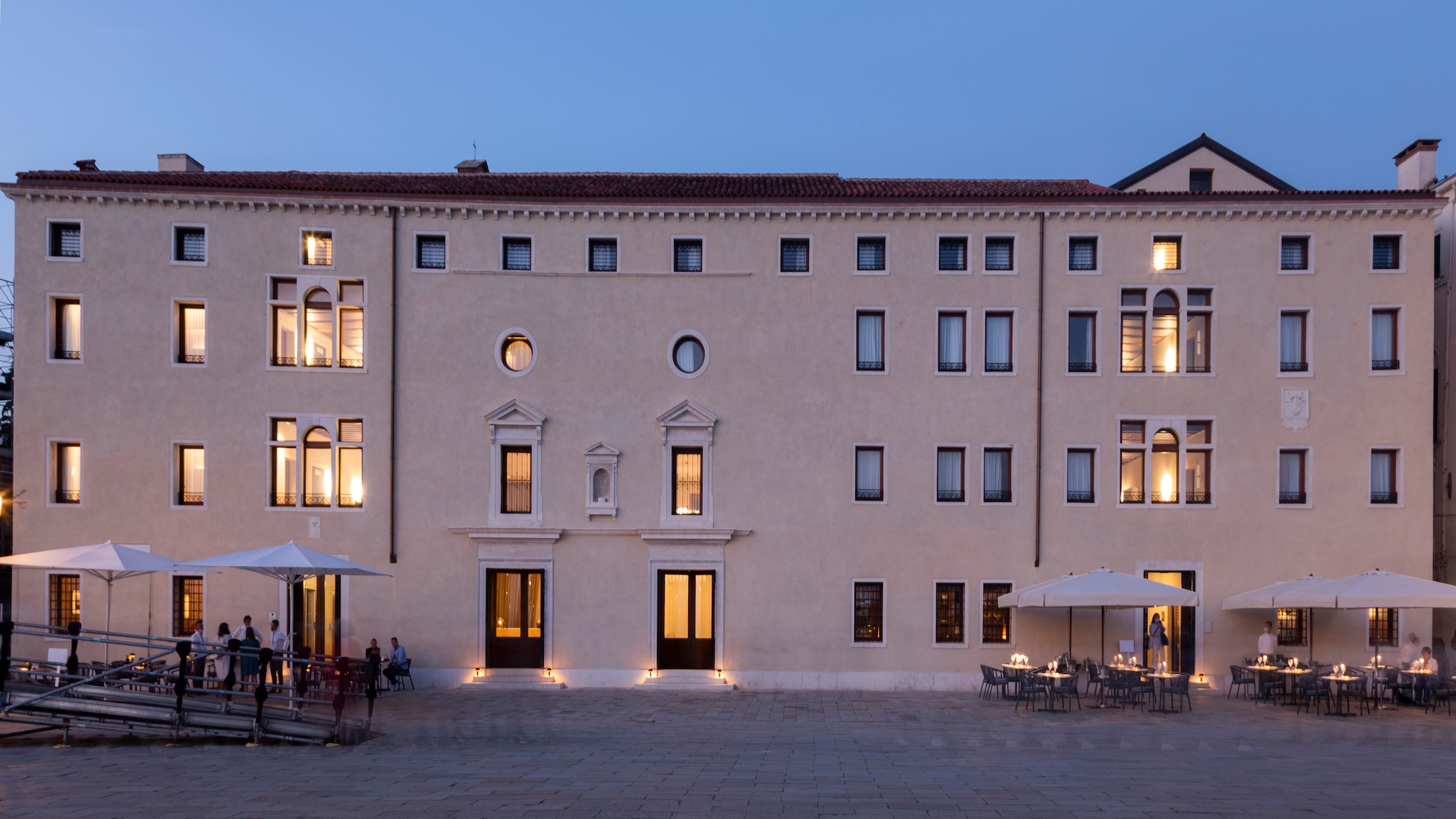
After a renovation that lasted two years, in 2021 Ca’ di Dio opened again, starting yet another life, that of the “elegant Venetian refuge” – the latest addition to the Alpitour Group’s VRetreats collection – a stone's throw away from St. Mark’s Square, and in a strategic position for those visiting the Biennale. A hotel with 66 doors, to 57 rooms and 9 suites.
On the ground floor, in addition to the lobby, there are a reading room, two restaurants, Essentia and Vero – the latter open also to outside guests, and the Alchemia bar. “This is not a building, it is a house”, explains director Christophe Mercier, retracing the steps that transformed the former hospice into a hotel. The process was carried out together with Patricia Urquiola, who was in charge of the interior design project and the artistic direction. “We tried to change as little as possible of this place, which has always welcomed visitors”, adds the director. By doing so they created a space that is warm, welcoming, modern and sophisticated in its shapes, colours and scents. “But without overdoing it”, Mercier points out: for him, hospitality based on the concept of home is at the heart of the project. And Ca’ di Dio, he says, is reminiscent of many “authentic” Venetian houses where he has had the opportunity to be a guest over the years. It is a reflection of a city out of time, in the antiquity that overlooks the streets and in the modernity that unfolds inside its walls.
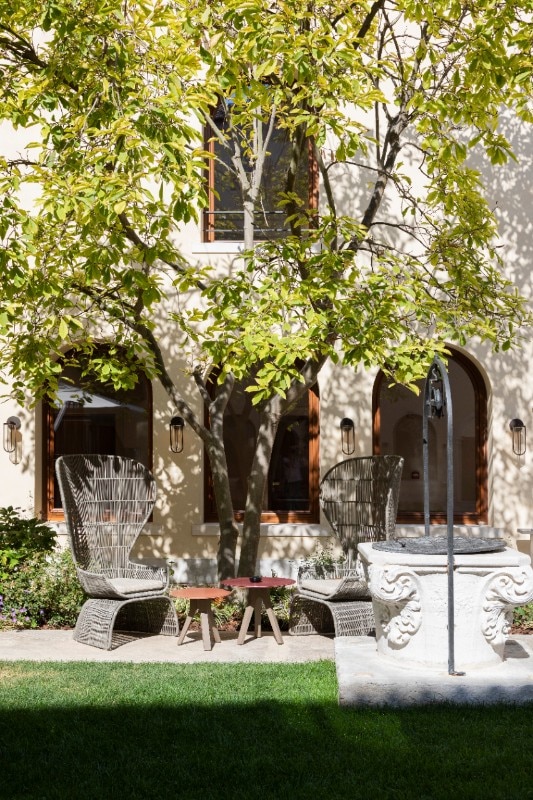
The project: materials and colours
The common aim was to design a “Venetian house”, says Patricia Urquiola, without forgetting that the guest should be able to experience the history of the building. And to breathe the air of Venice, the “heart of the project”, through the use of materials and colours that tell the story of the lagoon through its craftsmen, its historical heritage and its unique nature.
Thus, on the ground floor we find Iranian travertine and Orcia stone, and woven wood and traditional local glass are used for the walls. In the rooms, there are fabric boiseries and wooden frames “designed to give continuity to and highlight the view of the city”, a pouf in Venetian fabric, wall lights and floor lamps made in mouth-blown Murano glass, again designed by Urquiola, on the mirrored walls of the rooms.
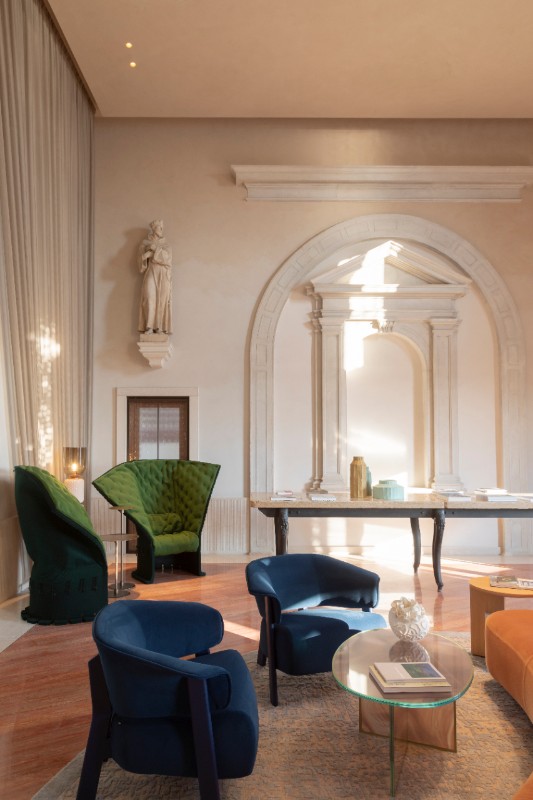
Glass is also an important element in the common areas, a recurring element throughout the renovation project, from the vases and other styling elements in the sails of the lobby to the experimentation carried out on the doors in the lobby, with an effect reminiscent of classic Venetian leaded glass. But it is not a search for a nostalgic effect, says Urquiola, who details the thermoforming technique used, “imprinting in the sand the old glass rollers used for leaded glass in traditional Venetian windows”.
The idea of reflection, and above all that of water, “another major design theme”, says Urquiola, is also found in the shades and transparencies of the colours. The palettes are soft, delicate, sometimes suffused. “For the fabrics we selected the colours of the lagoon the hotel is overlooking”, says the architect, with the intention of recreating indoors the chromatic path experienced when walking through the city: cold blues, greens and greys meet the warmer tones of bricks and terracotta.
Inside the restaurant Vero
The Vero restaurant is a place of the utmost importance because it is a space of interpenetration between the interior and the exterior, between Venice and the house, between the guests and the outside customers, between the hotel and the products of the local area. Urquiola describes it as “a precious treasure chest”, organised in micro-living rooms, embellished with custom-made crockery – such as the glasses with spikes that make them easier to hold – and the large still life on the ceiling. The welcoming colours recall those of the lagoon, and the feeling is that of an elegant film from the 1960s restored in 4K. In Venetian “vero” means glass, but the name of the restaurant can also be read as “Venetian Roots”. Here you can eat traditional dishes, on a changing seasonal menu and accompanied by herbs and aromas from the garden, such as ground sun-dried tomato.
Imprinting in the sand the old glass rollers used for leaded glass in traditional Venetian windows.
In the restaurant, the approach is to rediscover and enhance local traditions. This shines through both in its interior design as well as its cuisine. Mercier points out and defends the choices made, such as the choice to have only one champagne, from a small maison, the only wine not from Triveneto that is served in the hotel, and the investment in order for everything to be home-made, including the bread and croissants served at breakfast in the Essentia restaurant. “I chose not to serve salmon at breakfast, instead guests will find trout, which we smoke ourselves”, he says, “everything is very refined, very chic”, he emphasises, and above all consistent - sustainability and local are keywords – with the idea that this is a home.
A welcoming home
In the common rooms as well as in the long corridors, where the light from the inner courtyard comes in through large windows, there is a feeling of soft, geometric peace, which echoes in the courtyards – one larger, the one further away dedicated to the vegetable garden. A monastic oasis that cuts the visitor off from the confusion of Venice, where tourists swarm into the nearby Piazza San Marco amidst the large puddles left by the flooding (Acqua Alta) a few days before, from the crowd around the little man under the porticoes who plays the three-card game, from the clinking of glasses of spritz at the tables in the not-so-distant Via Garibaldi, from the clothes hanging in the alleyways and the bells of a thousands of churches ringing. From the acrid smell of the canals and of a city that once was the capital of the world.
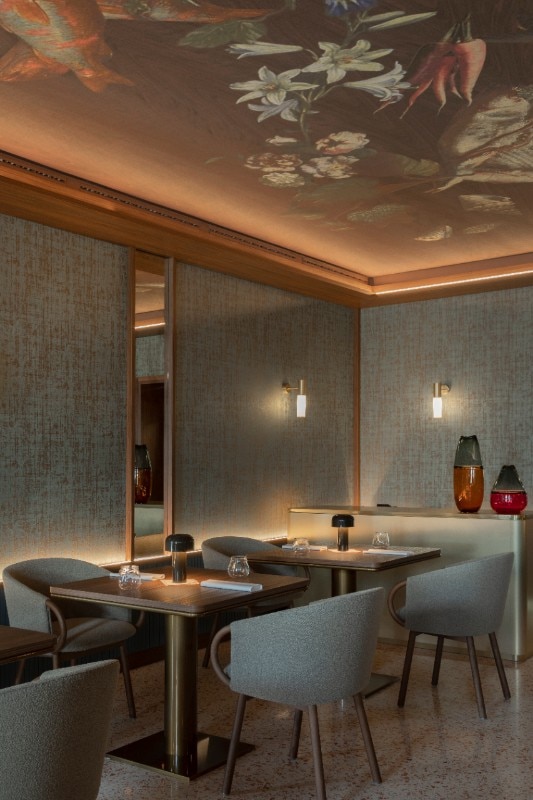
From the two roof-terraces, a symbolic structure of the city, accessed from as many suites or independently, we can admire a chaotic view of the Venetian rooftops, of the museum-city teeming with life, and further away the sunset on the Island of San Giorgio, captured by tourists on their mobile phones, but also the tranquillity of the main internal courtyard of Ca’ di Dio.
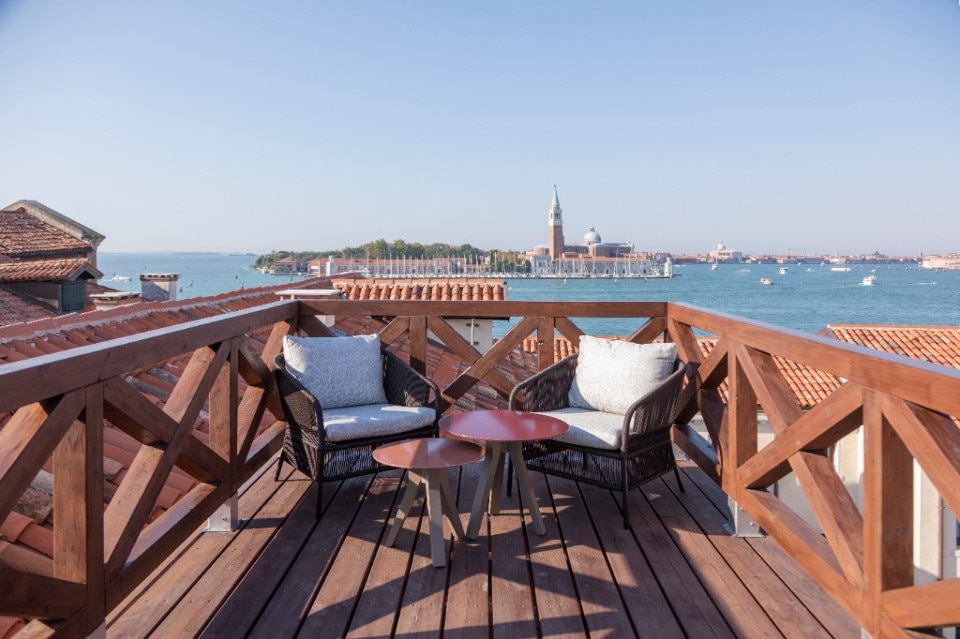
“I’d like to see unplanned events occur”, says Urquiola, the most obvious examples being a dinner organised on one of the roof-terraces or a lunch in the courtyard where the vegetable garden is. But the possibilities here, in this house, are infinite, she emphasises. And she echoes a broader discussion about what a hotel should be like today, that is, more and more like a domestic space.
“A hotel must provide the same physical and mental comfort as a home, but also include some experimentation”, explains the designer. “It can represent our ideal home, with everything we would like to have and cannot have in everyday life”.
- Project:
- Ca’ di Dio
- Interior Design:
- Patricia Urquiola
- Typology:
- Hotel
- Operator:
- Voi Hotels/Gruppo Alpitour
- Place:
- Castello district, Venice
- Area:
- 4.642 sqm
- Rooms:
- 66
- Flats:
- 4
- Completion:
- 2021


